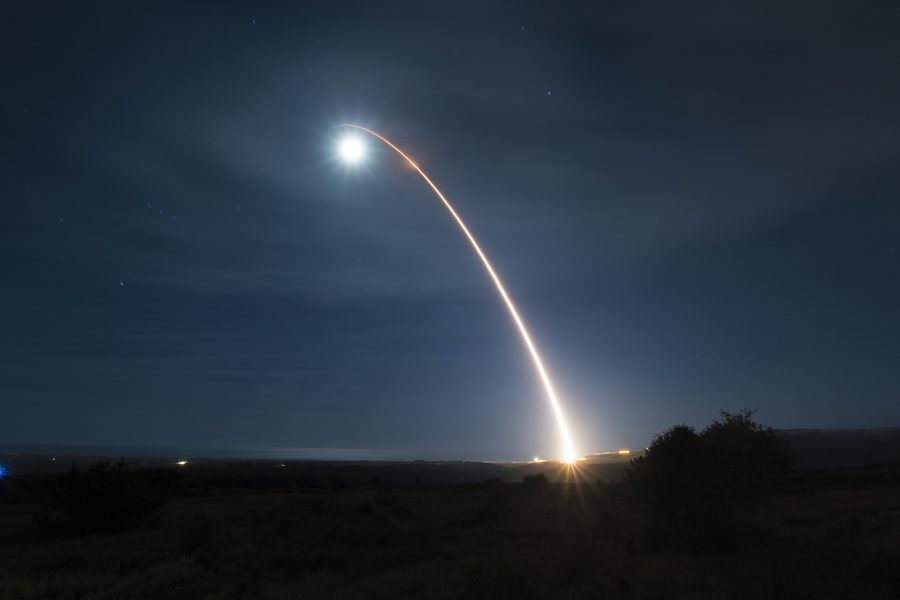If a nuclear missile passes through space on its way to hit the Earth, should the Space Force own it?
That idea puzzled some policy watchers who read a section on orbital flight in the Space Force’s first Space Capstone Doctrine paper, published Aug. 10. To them, it suggests that the Air Force’s intercontinental ballistic missiles, which are fired from underground silos and arc above the atmosphere before plummeting to a target, would fall under the space jurisdiction instead.
“Orbital flight (also referred to as spaceflight) is the act of deliberately manipulating gravitationally curved trajectories in order to transverse beyond Earth’s atmosphere and through space,” the doctrine document said.
That definition covers “suborbital trajectories that travel into space but deliberately reenter the atmosphere before a complete circumnavigation,” it added.
The section struck some policy experts as odd.
“Not sure why they included suborbital as a subset of orbital flight, as by definition, suborbital is NOT orbital. Does that mean ICBMs now do orbital flight?” Brian Weeden, program planning director at the Secure World Foundation, mused on Twitter.
“I think they’re either confused on the physics or have decided to open a legal door for some sort of nuclear weapons delivery from ‘near space,'” he added.
ICBMs and space operations have long been intertwined. Russia used the world’s first ICBM, the R-7, to launch Sputnik, the first artificial satellite, in 1957. A modified R-7 missile also carried cosmonaut Yuri Gagarin’s spacecraft into orbit in 1961.
“Flying atop a highly modified Titan II ICBM, NASA’s Gemini Manned Spaceflight program achieved 100 percent mission success. Titan’s exemplary record established a standard for perfection, safely launching two-man crews into orbit 10 times from 1965-1966, one of the most dynamic and fast-paced periods in the Space Race,” Lockheed Martin said of the missile built by its predecessor, The Martin Company.
The Space Force today hosts ICBM tests at Vandenberg Air Force Base, Calif., where its launch range works with Air Force Global Strike Command to send missiles into the Pacific Ocean.
Kaitlyn Johnson, associate director of the Aerospace Security Project at the Center for Strategic and International Studies, argues the Space Force should not manage the land-based nuclear missiles—though its missions do include tracking and warning of enemy ballistic missiles. (Others say ICBMs are a better fit for the Army than the Air Force.)
Describing orbital flight as such may have other benefits.
“This might give them more claim to jurisdiction or the potential for future suborbital space travel for military logistics,” like moving people or supplies, Johnson said.
According to the Space Force, the writing isn’t an oversight or an attempt to swipe the ICBM mission. The doctrine is simply laying out what the space domain looks and acts like.
The Space Force is responsible for defining space’s physical and operational characteristics, but it is not the only service that deals with the cosmos, Col. Casey Beard, commander of the operational group Space Delta 9 at Schriever Air Force Base, Colo., said in an email.
“The Air Force has a small contingent of land and maritime capabilities, and the Army and Navy have air assets,” Beard said. “However, the Air Force is the only service designed and optimized for the air domain and is therefore responsible for defining that domain’s physical and operational characteristics for the Joint Force, just as the USSF now is for space.”
It appears the nuclear missiles will stay put.

